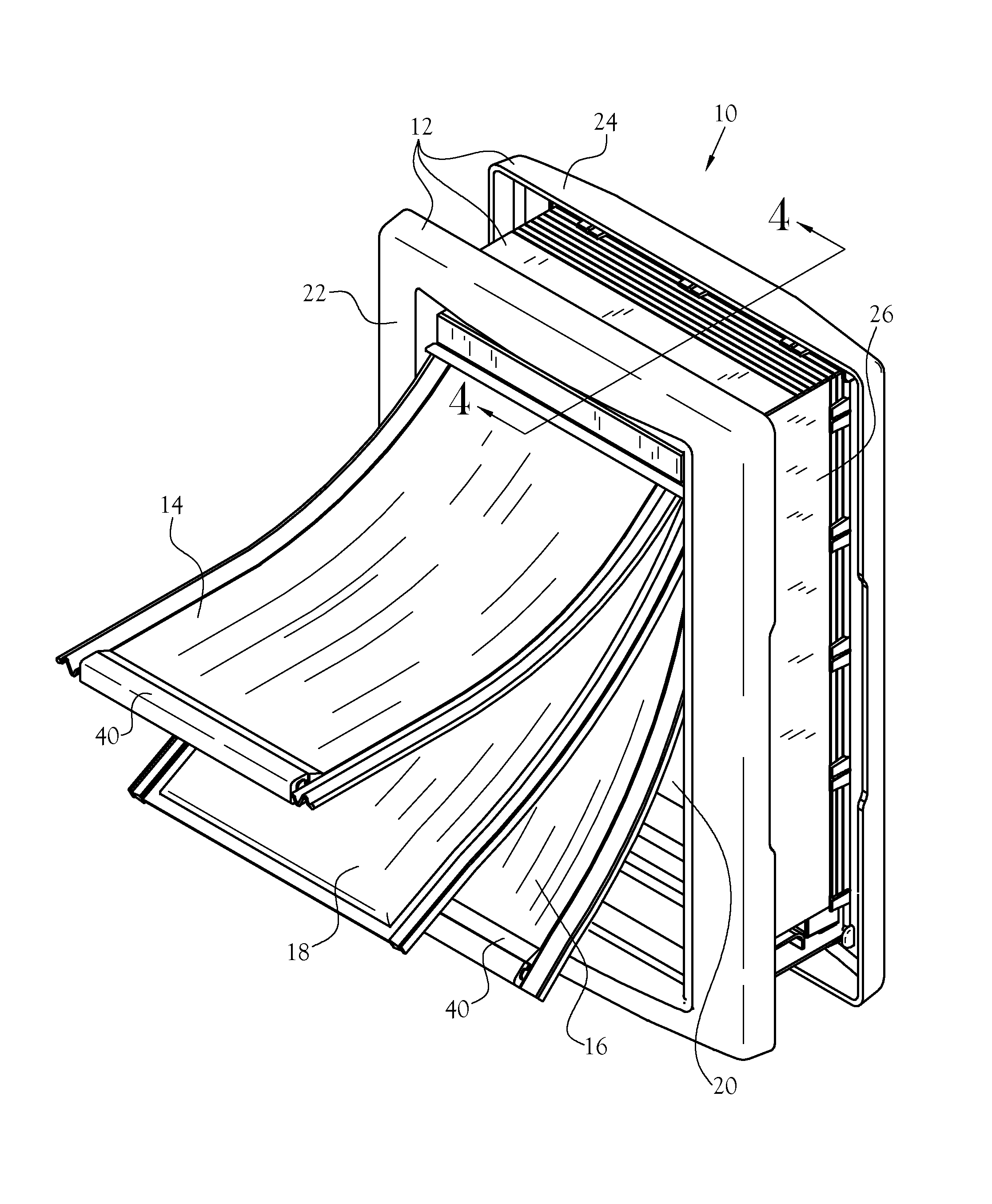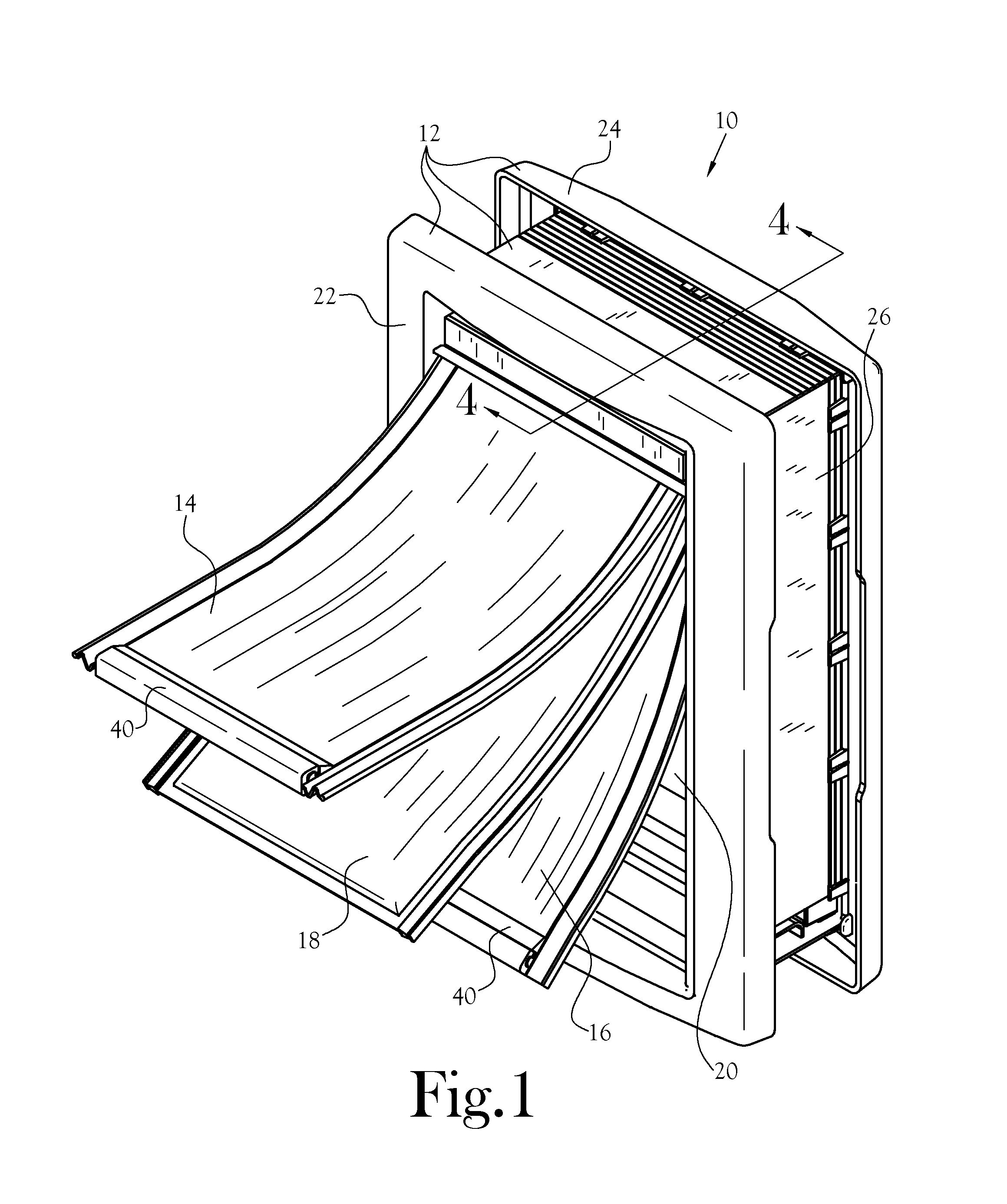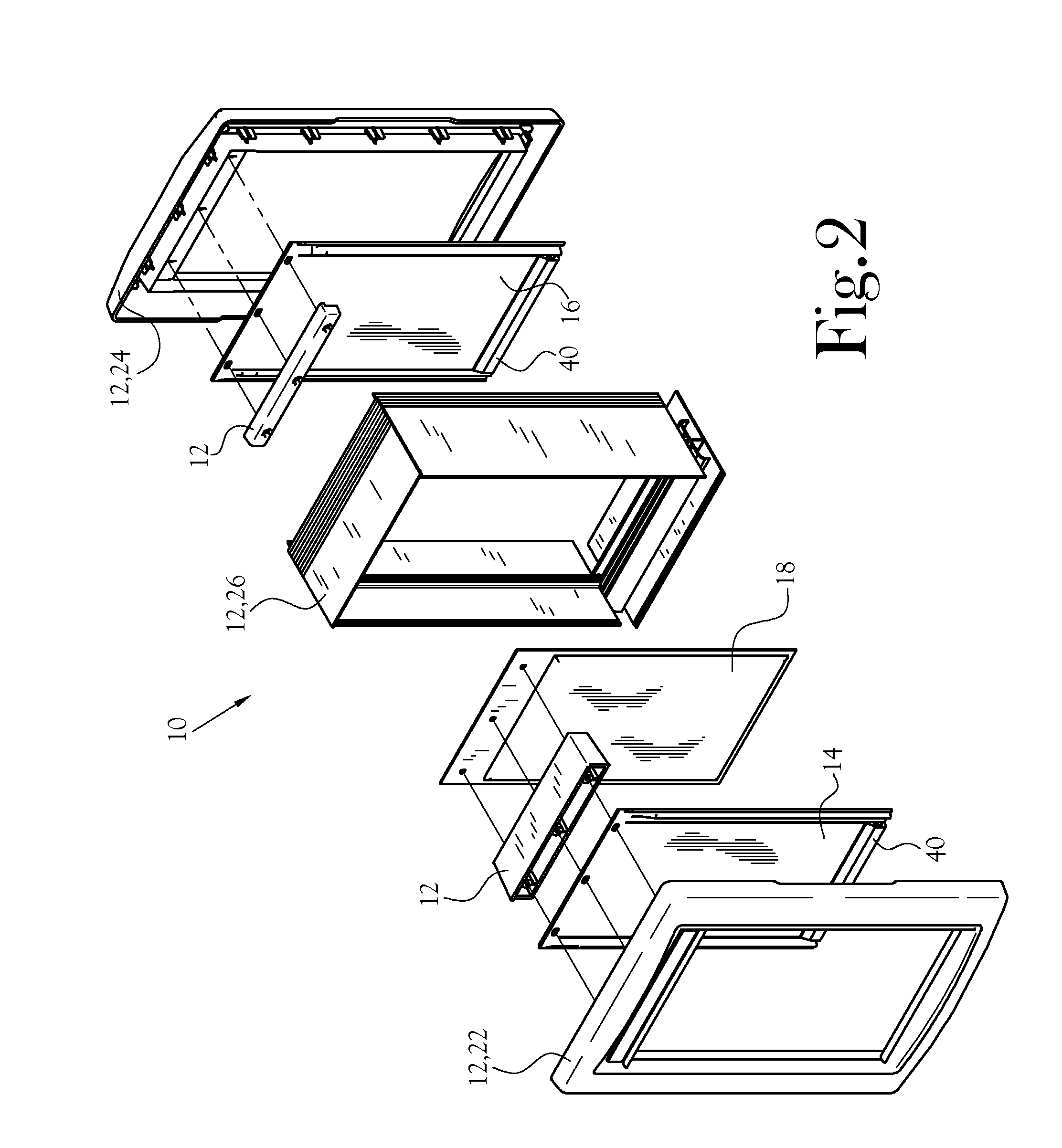Insulated Animal Door
a technology for animal doors and doors, applied in animal husbandry, building components, construction, etc., can solve the problems of reducing thermal conductivity within the passageway, and achieve the effects of reducing thermal transfer through the passageway, reducing thermal convection, and reducing thermal convection
- Summary
- Abstract
- Description
- Claims
- Application Information
AI Technical Summary
Benefits of technology
Problems solved by technology
Method used
Image
Examples
Embodiment Construction
[0016]The present invention provides an animal door for providing an animal a passageway through a structure and for reducing thermal transfer through the passageway. The animal door defines the passageway, which is sufficiently large for the animal to pass through, and is adapted to be secured to the structure such that the animal can pass through the structure by passing through the passageway. The animal door includes at least three flaps disposed at the passageway. The flaps are constructed and configured to reduce thermal transfer through the passageway by reducing both thermal convection and thermal conductivity at the passageway. One embodiment of the animal door constructed in accordance with the various features of the present invention is illustrated generally at 10 in FIG. 1 and FIG. 2, FIG. 2 being an exploded view of the animal door 10 of FIG. 1.
[0017]The animal door 10 of FIG. 1 and FIG. 2 includes a frame 12, a first outer flap 14, a second outer flap 16, and an inner...
PUM
 Login to View More
Login to View More Abstract
Description
Claims
Application Information
 Login to View More
Login to View More - R&D
- Intellectual Property
- Life Sciences
- Materials
- Tech Scout
- Unparalleled Data Quality
- Higher Quality Content
- 60% Fewer Hallucinations
Browse by: Latest US Patents, China's latest patents, Technical Efficacy Thesaurus, Application Domain, Technology Topic, Popular Technical Reports.
© 2025 PatSnap. All rights reserved.Legal|Privacy policy|Modern Slavery Act Transparency Statement|Sitemap|About US| Contact US: help@patsnap.com



